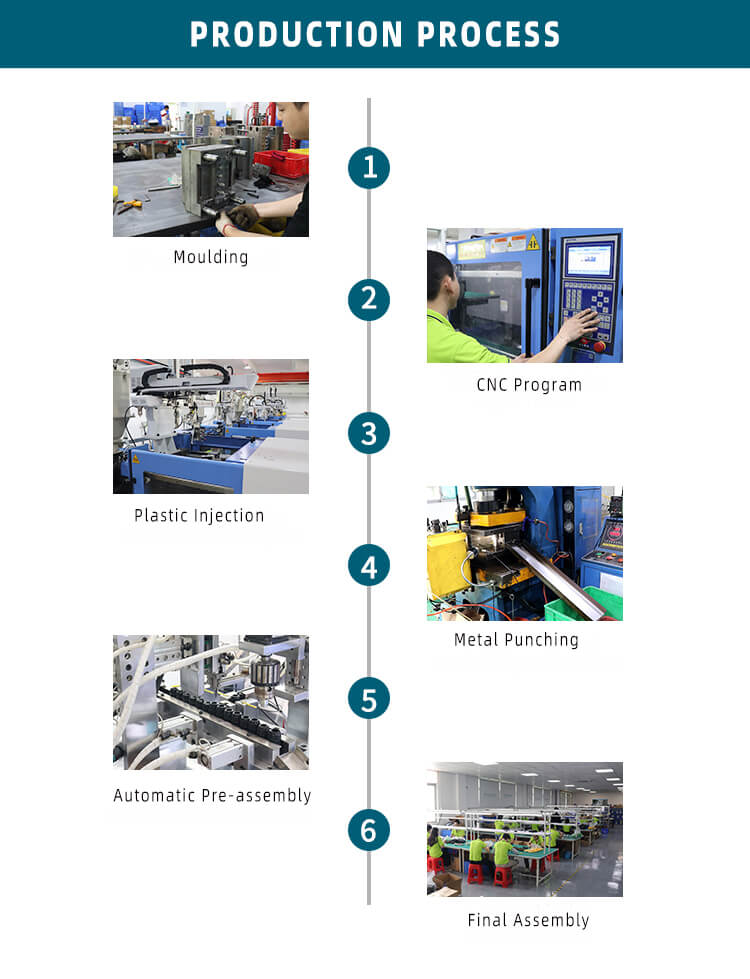Waterproof wire connectors are increasingly widely used, many people read my previous post, should know the advantages and uses of waterproof wire connectors, then today to say that we may not know the knowledge of waterproof wire connectors, waterproof wire connectors manufacturing process is how? Today,the weichat connector manufacturer to introduce you.
Waterproof wire connector manufacturing process
1. stamping
The manufacturing process of electronic wire connectors generally begin with the stamping of pins. Through a large high-speed stamping machine, electronic wire connectors (pins) made of thin metal strip stamping. One end of the large roll of metal tape is fed into the front of the press, and the other end is wrapped through the hydraulic table of the press into the tape reel, which is pulled out by the tape reel and rolled to stamp out the finished product.
2. Plating
Connector pins should be sent to the plating section after the completion of stamping. At this stage, the electronic contact surface of the wire connector will be plated with various metal coatings. Similar to the stamping stage of a class of problems, such as pin twisting, cracking or deformation, will also be in the stamping of good pins into the plating equipment in the process of appearing. With the techniques described in this paper, these types of quality defects are easily detected.
However, for most machine vision system providers, many of the quality defects that occur during the plating process are still “off-limits” to the inspection system. Manufacturers of electronic waterproof wire connectors expect inspection systems to detect inconsistent defects such as small scratches and pinholes in the plated surface of wire connector pins. Although these defects for other products (such as aluminum cans bottom cover or other relatively flat surface) is easy to identify; but because most electronic wire connectors irregular and angular surface design, visual inspection system is difficult to get enough to identify these subtle defects required image.
3. injection molding
The plastic box seat of the electronic waterproof wire connector is made in the injection molding stage. The usual process is to inject the molten plastic into the metal tire film, and then quickly cooled into shape. When the molten plastic is not completely filled with film when the so-called “leakage” (Short Shots), this is a typical defect to be detected in the injection molding stage. Other defects include filled or partially blocked joints (these joints must be kept clean and clear in order to be properly connected to the pins during final assembly). Machine vision systems for post-molding quality inspection are relatively simple and easy to use, as the use of backlighting makes it easy to identify missing cartridge holders and blocked joints.
4. Assembly
The final stage of electronic wire connector manufacturing is the assembly of the finished product. The plating of the pins and injection molded box seat mating there are two ways: individual mating or combined mating. Single plug means that each time a pin plugging; combination of plugging will be a number of pins at the same time with the box seat plugging. Regardless of which method of insertion is adopted, manufacturers are required to test all the pins in the assembly stage for missing and correctly positioned; another category of routine testing tasks are related to the measurement of the connector mating surface spacing.
As with the stamping stage, the assembly of connectors also poses a challenge to automatic inspection systems in terms of inspection speed. Although most assembly lines are running at a rate of one or two pieces per second, the vision system typically has to complete several different inspection projects for each connector that passes through the camera. Thus, inspection speed is once again an important system performance metric.


9.jpg)

0 Comments